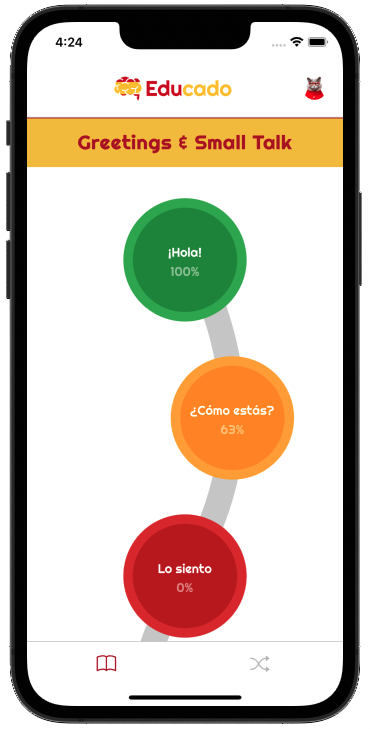Present tense conjugation and usage of 'ser'
The Usage of "Ser"
"Ser" is one of the two verbs in Spanish that translate to "to be" in English. The other verb is "estar." "Ser" is used in specific contexts to describe characteristics that are seen as permanent, essential, or defining.
Key Uses of "Ser"
-
Identity and Definition
- "Ser" is used to define or identify people, objects, or concepts.
- Example: "Ella es doctora." (She is a doctor.)
- Here, "ser" indicates a fundamental aspect of her identity.
-
Origin and Nationality
- "Ser" is used to express origin, nationality, or the place someone or something comes from.
- Example: "Soy de México." (I am from Mexico.)
- This use indicates the person's place of origin.
-
Characteristics and Descriptions
- "Ser" describes inherent or permanent qualities such as physical traits, personality, or color.
- Example: "El cielo es azul." (The sky is blue.)
- This use of "ser" expresses a characteristic that is generally seen as constant.
-
Time and Date
- "Ser" is used to tell time, express dates, and refer to events.
- Example: "Son las tres de la tarde." (It is three in the afternoon.)
- "Hoy es lunes." (Today is Monday.)
- These uses convey specific time-related information.
-
Possession
- "Ser" indicates possession when used with the preposition "de."
- Example: "Este libro es de Juan." (This book is Juan’s.)
- This usage identifies who owns something.
-
Relationships
- "Ser" is used to describe relationships between people, whether familial or social.
- Example: "Ella es mi hermana." (She is my sister.)
- Here, "ser" highlights a familial connection.
-
Events
- "Ser" is also used to indicate where or when an event takes place.
- Example: "La fiesta es en mi casa." (The party is at my house.)
- This tells the location or time of an event.
Comparison with "Estar"
While "ser" deals with inherent qualities, "estar" is used to describe temporary states, conditions, or locations. For instance:
- Ser: "Soy feliz." (I am a happy person—suggesting a permanent trait.)
- Estar: "Estoy feliz." (I am happy—suggesting a temporary feeling.)
"Ser" is essential for describing qualities and states that are considered permanent or defining. Whether describing identity, origin, time, or relationships, "ser" plays a crucial role in conveying the fundamental aspects of a subject in Spanish.
Terms of service |
Privacy statement |
E-mail us at: info@educado.app
© Copyright Educado 2024 - All rights reserved
Educado | Opaallaan 1180 | 2132LN | Hoofddorp | Netherlands
© Copyright Educado 2024 - All rights reserved
Educado | Opaallaan 1180 | 2132LN | Hoofddorp | Netherlands


